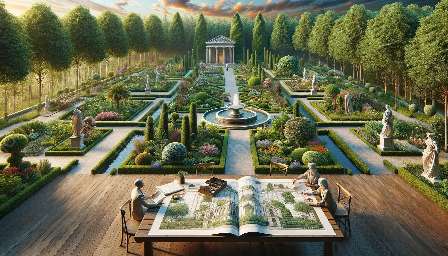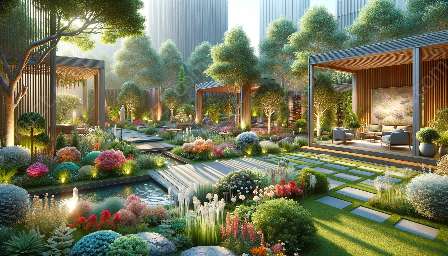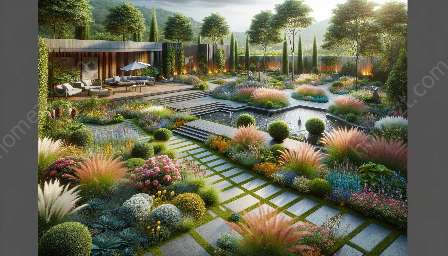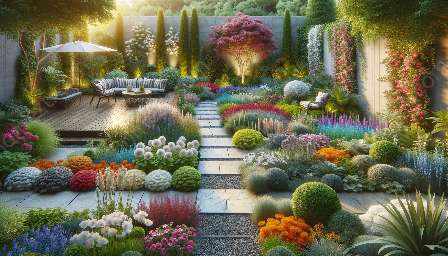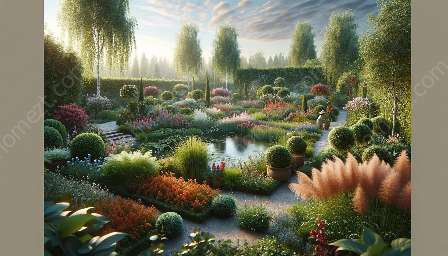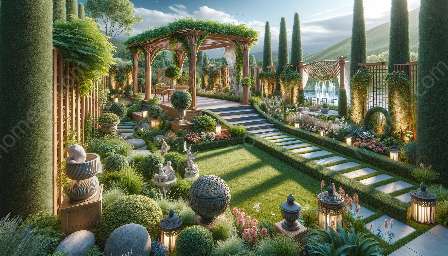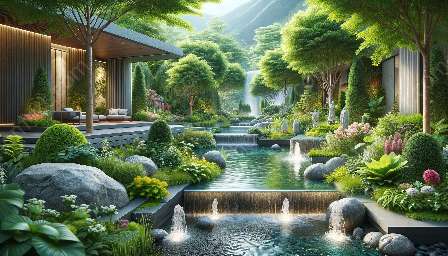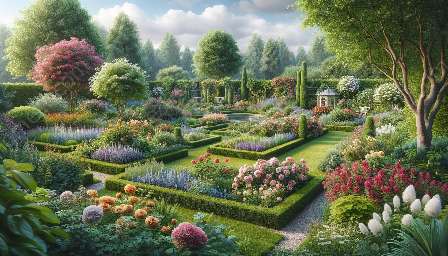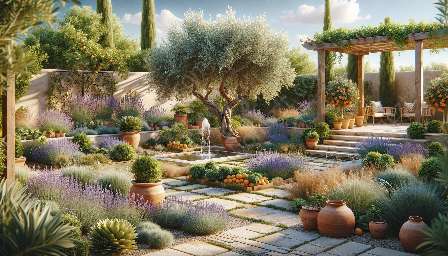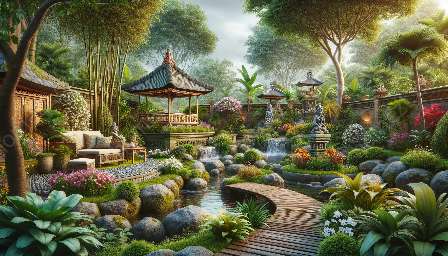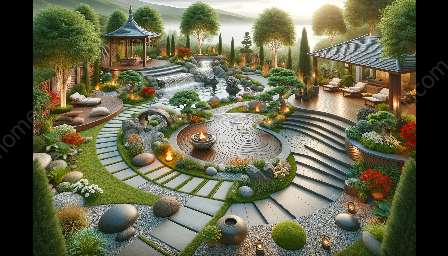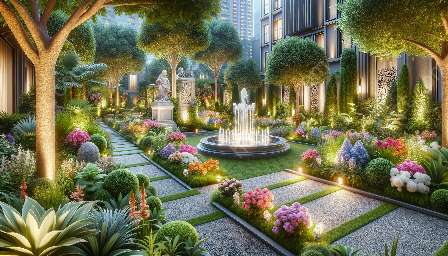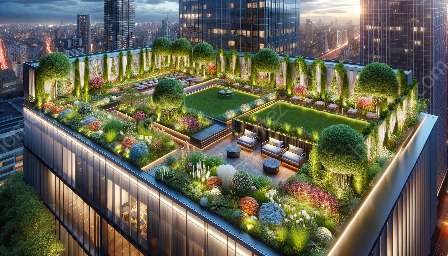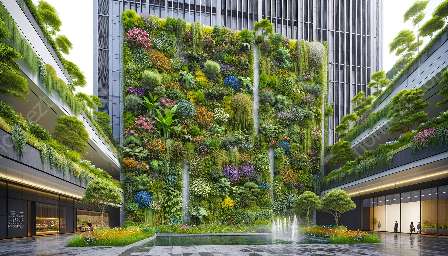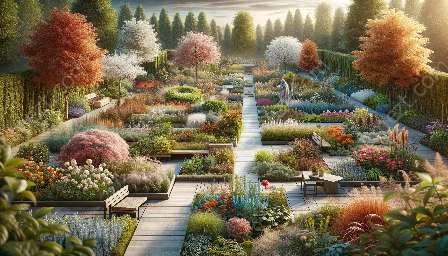Gardens have been an integral part of human civilization and culture for centuries. Beyond providing food and medicinal plants, gardens have always held an aesthetic value. The elements of garden aesthetics play a crucial role in transforming a simple outdoor space into a beautiful, tranquil, and inspiring environment.
The Key Elements of Garden Aesthetics
When designing a garden, it's essential to consider various elements that contribute to its aesthetics. These elements encompass not only the visual appeal but also the functionality and sensory experience the garden offers. Let's explore some of the key elements of garden aesthetics:
1. Plant Selection
Plants form the backbone of any garden. The selection of plants plays a vital role in creating a cohesive and visually appealing garden design. Consider the color, texture, size, and form of plants to create a harmonious composition. Additionally, incorporating a diverse range of plants can enhance biodiversity and attract wildlife, adding another layer of beauty to the garden.
2. Layout and Structure
The layout and structure of a garden define its overall appearance and functionality. Elements such as pathways, hardscapes, and architectural features contribute to the garden's spatial organization. Thoughtful placement of these elements can create focal points, guide the flow of movement, and introduce intrigue into the garden design.
3. Color Palette
The use of color in a garden can evoke different emotions and create visual interest. A well-curated color palette can set the mood of the garden, whether it's a serene pastel scheme or a vibrant burst of hues. Consider the seasonal variation of colors and how they interact with each other to ensure a dynamic and ever-changing display of beauty.
4. Texture and Contrast
Texture adds depth and dimension to a garden. By incorporating a variety of foliage and material textures, you can create visual contrast and tactile sensations. Smooth, glossy leaves juxtaposed with rough bark, or delicate flowers against coarse gravel, all contribute to the sensory richness of the garden.
5. Scent and Sound
Aesthetics in a garden extend beyond the visual realm. The inclusion of aromatic plants can introduce a fragrant dimension to the space, engaging the sense of smell. Similarly, the use of water features or wind chimes can add soothing sounds, enriching the overall sensory experience.
Aesthetics Planning for Gardens
Once the fundamental elements of garden aesthetics are understood, it's crucial to integrate them thoughtfully into the planning and design process. Aesthetics planning for gardens involves a multidisciplinary approach that considers ecological, cultural, and experiential aspects. Here's how aesthetics planning can be applied to create an attractive and functional garden:
1. Site Analysis
Before implementing any design, a thorough analysis of the garden site is essential. Understanding the microclimates, soil conditions, and existing vegetation can inform the selection of plants and the layout of the garden. This analysis ensures that the design is responsive to the site's natural attributes.
2. Ecological Harmony
Integrating native plants and promoting ecological diversity are key aspects of aesthetics planning. Native plants are well-adapted to the local environment and require less maintenance, while also supporting local wildlife. By mimicking natural ecosystems, a garden can contribute to the preservation of biodiversity and ecological balance.
3. Seasonal and Temporal Considerations
An aesthetically pleasing garden is one that evolves throughout the seasons and over time. Aesthetics planning involves the selection of plants and materials that offer visual interest and functionality across different seasons. Additionally, incorporating elements that age gracefully ensures the garden's long-term appeal.
4. User Experience
Considering the experiential aspect of garden aesthetics is crucial. Aesthetics planning accounts for the users' needs and preferences, ensuring that the garden not only looks beautiful but also provides a comfortable and enjoyable experience. Accessibility, seating, and interaction zones are all integrated to enhance user experience.
5. Cultural and Historical Context
Incorporating cultural and historical references into garden design adds layers of meaning and depth. Aesthetics planning considers the cultural significance of certain plants, design motifs, or hardscape materials, grounding the garden in its broader context and enriching the storytelling aspect.
Creating an Aesthetic Garden
Bringing the elements of garden aesthetics and aesthetics planning together, the process of creating an aesthetic garden begins with a vision and an understanding of the natural and cultural context. Following these key steps can lead to the realization of a beautiful and harmonious outdoor space:
1. Inspiration and Concept Development
Start by gathering inspiration from various sources, such as art, nature, or architectural elements. By developing a design concept that resonates with the site's characteristics, a garden can reflect a sense of place and authenticity.
2. Material and Plant Selection
Based on the site analysis and aesthetics planning, curate a selection of materials and plants that align with the design concept. Consider the longevity, maintenance requirements, and ecological impact of each selection to create a sustainable and visually compelling garden.
3. Spatial Design and Functionality
Utilize the principles of aesthetics planning to organize the garden space, creating functional zones that cater to different activities and experiences. Harmonizing the layout and circulation paths ensures a seamless and intuitive flow within the garden.
4. Construction and Implementation
Executing the design involves skilled craftsmanship and attention to detail. Collaborating with professionals who understand the nuances of horticulture, hardscaping, and water management ensures the translation of the design into a tangible and captivating garden.
5. Maintenance and Evolution
An aesthetically pleasing garden is a living entity that requires ongoing care and adaptation. Establish a maintenance plan that considers horticultural practices, seasonal adjustments, and long-term management to preserve the garden's aesthetics and ecological integrity.
By embracing the elements of garden aesthetics and integrating aesthetics planning, a garden can transcend mere visual beauty and become a holistic and enriching outdoor space. Understanding the symbiotic relationship between the garden and its environment empowers designers and garden enthusiasts to create landscapes that are not only attractive but also sustainable, functional, and emotionally resonant.

